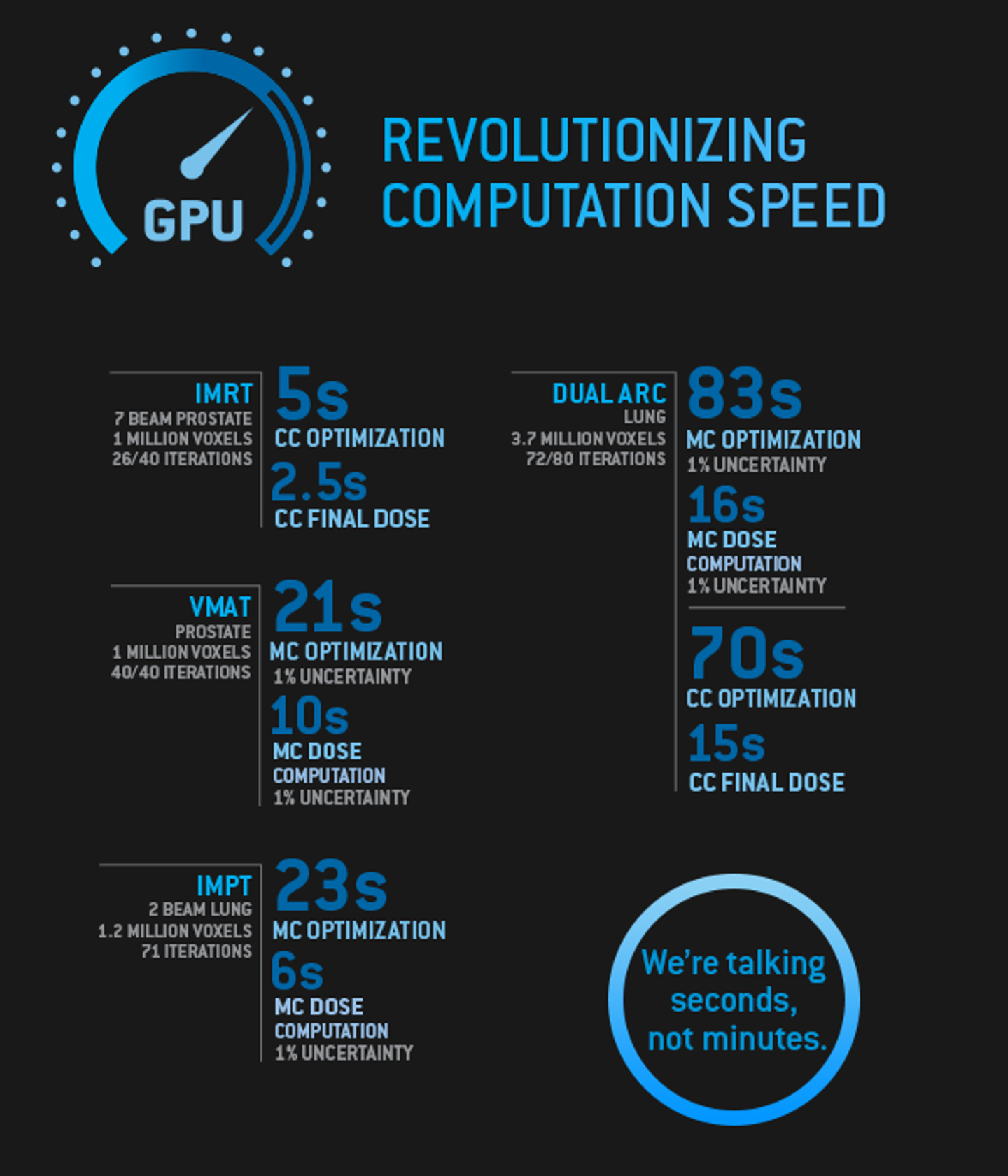Decreasing calculation times for VMAT planning – from around 10-17 minutes for optimization and final dose calculation to around 2-4 minutes – significantly increases the fulfillment of clinical goals*. RayStation also offers the possibility to use Monte Carlo dose algorithms**, providing the highest level of accuracy. All calculations are run on GPU to enable outstanding results like those displayed here***.
Key Features
- Extremely fast GPU based Monte Carlo dose engine for optimization and final dose of proton PBS plans with calculation times typically under five seconds
- Collapsed Cone (CC) photon dose calculation engine
Singular value decomposition photon dose calculation engine for real-time purposes
- Efficient Monte Carlo (MC) for electron treatments
- Pencil-beam algorithm for proton PBS and broad beam techniques
- PBS carbon and helium dose computation using pencil-beam dose engine and RBE dose computation
______________________________________________________________
* Case study: “The effect of planning speed on VMAT plan quality.” Download below.
** Results may vary as dose computation time depends on several variables.








